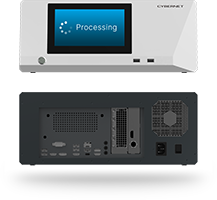Implementing AI in the operating room can improve patient outcomes and more efficient workflows for healthcare providers, creating a better environment for everyone involved.
- What is AI in the Operating Room?
- How is AI Used in the Operating Room?
- Benefits of AI in Operating Rooms?
- Challenges and Considerations
What is AI in the Operating Room?
Artificial intelligence is the field of science that focuses on creating thinking machines that can analyze data, develop insights, and provide solutions the same way humans can. Artificial intelligence can take several different forms in operating rooms, such as:
Machine Learning
For machines to think like humans, they must first learn like humans. Machine learning is the process of “teaching” an AI by exposing it to massive data sets and letting it recognize patterns within that data.
AI can later use this knowledge to derive insights from new data sets, helping with predictive analytics or spotting points of concern that go unnoticed by humans. Machine learning is the cornerstone of most modern AI programs.
Natural Language Processing
Anyone who’s dealt with an automated chatbot can attest that computers often struggle with understanding natural human conversation. Natural language processing uses AI programs to break down conversations into information computers can more easily process, categorize, and use. This frees providers from focusing on entering information on their medical computers and allows them to focus on the patient instead.
Machine Vision
This category of AI involves using trained programs to recognize certain elements in photographs and video, such as a patient’s veins or potential colorectal lesions. When enhanced by machine vision, an AI can detect these issues or track movement in an operating room, letting it identify possible inefficiencies in how providers work during surgery.
How is AI Used In the Operating Room?
There are multiple roles for AI in the operating room, including:
- Robotics: Artificial intelligence can control surgical assistance robots, taking over basic duties such as tying off sutures and closing off surgical sites. Doing so allows surgeons to focus on more complicated tasks that are better left to humans. AI can also enhance human efforts when operating on extremely delicate or small parts of the human body while filtering out unconscious movements or tremors in a surgeon’s hands.
- Computer Vision: Giving computers the ability to see the same way humans do lets them provide surgical guidance and recognize critical visual indicators within a patient’s body. By identifying what does and does not need to be operated on, AI computers can help prevent unnecessary tissue damage.
- Staff and Schedule Planning: With the average operating room costing $2,200 per hour to use, using them as efficiently as possible is a critical priority. AI’s predictive analysis capabilities help it predict case volumes and make staffing and scheduling decisions, helping assign the right people and equipment to the right task.
- Equipment and Patient Monitoring: During surgery, AI can automatically monitor a patient’s vital signs, such as blood pressure, oxygen saturation, and respiration rate, making it easy to detect any abnormalities before they become serious issues.
- Recording and Post-Op Analysis: By arranging cameras and microphones throughout the operating room, an AI “black box” (similar to those in aircraft) can record what happens during surgery. The AI can calculate how many non-case-related conversations occur, how many times a door opens, and other factors that might indicate a distracting or inefficient work environment.
Benefits of AI In Operating Rooms
By implementing artificial intelligence in the operating room, hospitals can reap several benefits, including:
- Greater Precision: By implementing AI-controlled robots capable of greater precision than human hands, 3D visualization and magnification to give a more complete perspective of a patient’s body, and AI-assisted analysis and diagnosis, providers can treat patients with greater accuracy.
- Minimize Invasiveness: Tied to the previous point, but operating with greater accuracy also reduces how invasive a procedure has to be. This leads to less post-operative pain, reduced scarring, and lower chances of infection. AI-powered analytics can help customize care by accounting for a patient’s medical history, delivering a more focused treatment plan.
- Tailor-Made Treatment: By automating the less critical parts of an operation, providers can focus on tailoring treatment to the patient’s specific needs, supported by AI-powered analytics that can compare the patient’s condition to that of thousands of similar cases.
- More Efficient Workflows: By using AI to monitor the activity in an operating room, hospitals can provide points where their workflow is inefficient and take steps to correct them, such as optimizing the layout of surgical tools or the room itself.
Challenges and Considerations
Like any new technology or tool, AI implementation in the operating room has several obstacles it must overcome.
The first and most impactful is the question of liability. If something goes wrong, if an AI makes a mistake, who is at fault: the provider that implemented its recommendation or was in charge of monitoring it or the developer of the AI? Government regulation must answer these questions if we hope to see widespread implementation.
Secondly, there is the issue of data privacy and security. Implementing AI involves vast amounts of sensitive information, which will require healthcare computers with strong data privacy and cybersecurity measures to ensure compliance with regulations like HIPAA.
Lastly, there is the problem of healthcare providers that are unwilling to embrace change. Surgical teams are understandably wary of any new tool or technique, especially one they believe is constantly spying on them or meant to replace them. Healthcare groups must earn the trust of their employees on this front by proving that AI is meant to be supplementary to their efforts and won’t be used as a disciplinary tool.
Conclusion
Embracing artificial intelligence in the operating room can lead to better results for both providers and patients. If you’d like to explore how Cybernet’s medical AI box PCs can help you achieve these incredible results, contact our team today.

